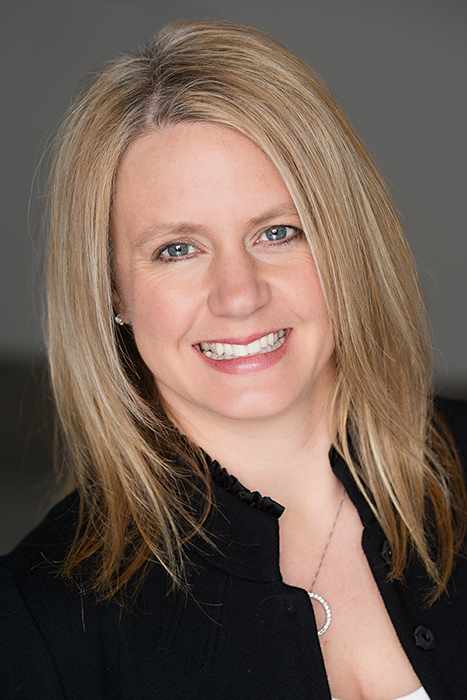The supply chain of a single product often involves multiple levels. For a company to adequately evaluate its risk and vulnerability, it must have a grasp on the full extent of its supply chain, according to Amy Kircher, Dr. PH, director, Food Protection and Defense Institute. “When we think about the supply chain there are two points to consider: One is just being aware of the depth and breadth of a supply chain to create a food product. It’s much larger than who you buy from and who you sell to,” says Kircher. “Second is moving from a reactive mentality to a proactive mentality. How do we get ahead and close vulnerabilities before they are exposed or monitor threats to the food system such that we can put mitigations in place.” During a discussion with Food Safety Tech, Kircher shares her perspective on how companies can understand and protect their supply chain.

Food Safety Tech: What are the biggest supply chain threats facing food companies?
Amy Kircher: I think one of the biggest challenges is just understanding the entire food supply chain and all the buying, selling and manufacturing that happens along that line. When food comes from a point of origin—whether it’s a farm or a manufactured nutrient—what are all the steps and movements of that product that then results in the final product that the end consumer buys? Typically companies know at least one [step] back and one [step] forward, but they don’t always know the entire breadth of the particular ingredient that they’re buying. Or, if they’re in the middle of the supply chain, [they may not know] where all of their products may be going if it’s sold multiple times (i.e., a spice as an ingredient). There are exceptions—some companies are vertically integrated and know their entire supply chain. But on average, that is a real challenge: Understanding the complexity of the supply chain, where are you in that process, whom you are buying from, and where the food is going afterwards.
FST: How can companies gain a better understanding of their supply chain?
Kircher: Ask questions of whom you’re buying product from—from where are they sourcing the ingredient or commodity? For example, if you’re making a five-component food product, ask your supplier, where does it get its stock from? From where are you sourcing? Have an open dialogue with your vendors and make sure you have the process in place so if you had to quickly identify where an [ingredient] was from, you could.
Secondly, understand the ingredients that you need to procure and be able to monitor where there might be threats for that particular product or commodity. If you need to buy peppers as an ingredient for a spice blend or a can of soup, [you should] be able to monitor what’s happening in that particular commodity: Has there been an intentional adulteration recently? Any recalls? Have there been weather issues in the part of the world where your particular pepper is sourced? If we know there is a natural disaster in a region, how quickly are you notified? Do you have alternate sources as a backup?
A great example is the Ebola [outbreak]: When Ebola happened, there were changes that were happening with cocoa almost daily, because most of the cocoa is sourced out of West Africa, exactly where Ebola was happening. There were price shifts and some transfer concerns where cargo ships weren’t coming into port in some of those countries. It’s important to have an understanding of the ingredients or commodities that you source and be well aware of what’s happening in that landscape.
FST: What steps should companies take to protect their supply chain?
Kircher: You should be doing vulnerability and risk assessments of your supply chain. Know where there are risks of that particular supply: Those risks could be a multitude of things, be it a natural risk or something related to a change in trade policy. Know where you have vulnerabilities within your system: Where could a particular product be exposed to a vulnerability, either natural or intentional? [From there], start assessing what can be done about it. If there’s a specific ingredient that you need to have to make a particular product, where does it come from and do you have alternative sources? What kind of testing mechanisms do you have in place? Some vendors only have one manufacturing site or one receiving site for a product they’re manufacturing. How secure is that processing plant? Is it in a hurricane zone? Have you had criminal activity there? Understanding where there are vulnerabilities in your supply chain allows you to prioritize which ones you should spend money on mitigating.
FST: What technologies do you find to be the most effective in assessing risks and providing visibility throughout the supply chain?
Kircher: I think there are several products that will help. At the Food Defense and Protection Institute, we have a couple. The first is a supply chain documentation and analysis tool (CRISTAL) that allows you to document your supply chain throughout the whole system. Then it applies weights and algorithms to allow you to see what is most critical in your supply chain, and from there you can look at risks from hazards. For a lot of companies, the first step is to map the entire supply chain. Having technology that allows them to do that efficiently versus drawing or creating an Excel spreadsheet allows them to visualize where they might have gaps/challenges, followed by risk and vulnerability assessment.
Second is horizon scanning, or looking at early indications of warnings of events. Our tool is called FIDES (Focused Integration of Date for Early Signals). It looks at predicative analytics—are there conditions or drivers that are occurring that might result in an emerging event or event that might create a problem? We can always scan and monitor where we might have challenges.
We want to move people from a reactive food protection and defense to a preventive posture where you are starting to be ahead of it [threats] and understand where you might have a risk or vulnerability that gets exposed such that you can mitigate it prior to a consumer purchasing [the product].




